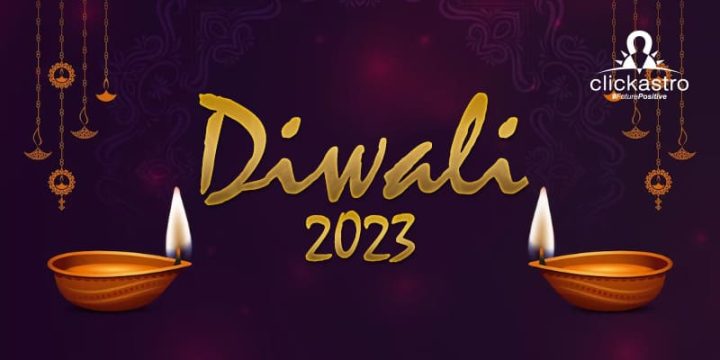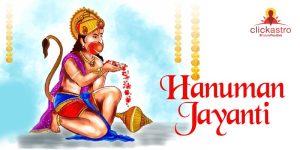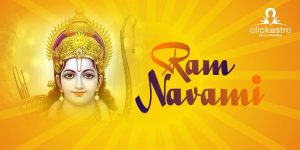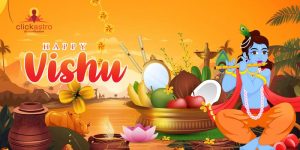Contents[hide]
When is Diwali 2023 in India?
As per the Hindu calendar, Diwali is observed on Amavasya (New Moon Day) of the month of Kartik.The Amavasya Tithi begins on November 12 at 02:45 pm and ends on November 13 at 02:57 pm.In 2023, Diwali falls on November 12 all over the country
Diwali 2023 Special days
- Day 1, Trayodashi (November 10, Friday):
Dhanteras (Dhantrayodashi), Dhanvantari Trayodashi and Yama Deepam. - Day 2, Chaturdashi (November 11, Saturday):
Narak Chaturdashi, choti diwali - Day 3, Amavasya (November 12, Sunday):
Diwali/Deepavali, Lakshmi Puja, Kali Puja, Kedar Gauri Vrat, Chopda Puja, Sharda Puja etc. - Day 4, Pratipada (November 13, Monday):
Govardhan Puja/Annakut, Bali Pratipada, Dyuta Krida and Gujarati New Year - Day 5, Dwitiya (November 14, Tuesday):
Bhai Dooj, Bhau Beej and Yama Dwitiya
Diwali Celebrations
The festival of lights ‘Diwali’ is an auspicious occasion celebrating the triumph of light over darkness, good over evil and hope over despair. Every year in October or November, millions of Hindus, Sikhs, and Jains across the world observe Diwali with five-day long festivities. It’s the most important holiday of the year in most parts of India. The lighting of diyas is the salient feature of Diwali. The other observations include lighting fireworks, making Rangolis, preparing sweets, buying new clothes, organising get-togethers etc. On the night of Diwali, the houses, temples, streets, shops and offices get illuminated with an array of oil lamps. All these lights eliminate darkness, and the prayers and celebrations create an atmosphere of love, happiness, purity and compassion. In many areas in India, Diwali is a festival lasting four to five days, the height of which is celebrated on the third day (Amavasya/New Moon day), coinciding with the darkest night of the year.
First Day of Diwali: Trayodashi (13th lunar phase)
The first day of Diwali is celebrated as Dhanteras or Dhanatrayodashi, which is a festival of wealth. On this day, people clean their houses, lay floor decorations such as Rangoli, place diyas or tea lights on entryways and balconies and purchase kitchen utensils. The observations also include some pujas and rituals. The business people worship their treasuries, and Ayurvedic practitioners worship Dhanvantari deity on this day.Second Day of Diwali: Chaturdashi (14th lunar phase)
This day is known as Naraka Chaturdashi, which is believed to be the day in which Sri Krishna slew the evil demon Narakasur. In North India, this day is known as Choti Diwali (small Diwali), the day before the main celebrations. The observations of this day include preparing sweets and exchanging them with the dear ones and decorating floors with Rangolis. In South India, the major Deepavali celebrations are observed on this night.Third Day of Diwali: Amavasya (New Moon)
The major Diwali celebrations take place on this day in most parts of India – western, central, eastern, and northern regions. The lighting of diyas, fireworks display, exchange of sweets, get-togethers and all other celebrations are the highest on this night which is also the darkest night of the year. Lakshmi Puja, or worship of Goddess Lakshmi, is a major ritual observed on this day.Fourth day of Diwali: Pratipada (the day after the New Moon)
This day is celebrated in different names – Govardhan Puja/Annakut, Diwali Padva or Bali Pratipada, Dyuta Krida and Gujarati New Year etc. The celebration Bali Pratipada symbolises God Vishnu’s conquest over the demon king Bali. Govardhan Puja or Annakut commemorates Krishna’s advice to the villagers of Gokul to worship Mount Govardhan and the subsequent events.Fifth day of Diwali: Dwitiya (second day after the New Moon)
The last day of Diwali is observed as Bhai Dooj. This is the second day of the bright fortnight and is dedicated to celebrating the brother-sister relationship. Traditionally, brothers gift their sisters, who honour them, with special rituals and sweets. For some Hindu-Sikh craftsmen communities, this is the day for Vishwakarma Puja.Astrological significance of Diwali 2023
The festival of Diwali falls during the autumn season in the northern hemisphere. It is celebrated on the Amavasya (New Moon Day) of the Hindu lunisolar month Kartik/Kartika, which in the Gregorian calendar falls between mid-October and mid-November. The festival of lights Diwali is unique in the fact that it is celebrated on the darkest night of the year. The Amavasya of the Kartik/Kartika month coincides with the darkest night in the Hindu lunisolar calendar. The 2023 Diwali falls on Sunday, November 12. That night witnesses the celebration of the victory of light over darkness which is symbolic of the victory of knowledge over ignorance, good over evil and purity over impurity.Important features of Diwali 2023 celebrations
Diwali is the most beautiful and exciting Indian festival. The night of Diwali illuminates every nook and corner of the country, and an air of happiness fills everyone’s mind. People celebrate this festival mainly with oil lamps and varieties of fireworks. On the night of Diwali, all houses, temples, streets, shops and offices are illuminated with a collection of oil lamps. Decorating floors with Rangoli, preparing sweets, buying new clothes, organising get-togethers and fairs etc., are also parts of Diwali celebrations. All these illuminations and merrymakings signify the victory of divine forces over the wicked. What does 2024 look like for you?The beliefs/legends behind Diwali
The festival of Diwali falls on the autumn harvest time and is associated with a variety of Hindu deities and traditions. These differences in tradition could be attributed to the various local autumn harvest traditions combined into one pan-Indian festival with a common significance. The myths and legends behind this festival vary with various regions across India, yet all share the common spiritual significance ‘knowledge/good wins over ignorance/evil’. The most common legend behind Diwali is associated with the epic Ramayana. It is believed that Diwali is the day on which Rama, Sita, Lakshmana and Hanuman reached Ayodhya after their exile and the victory over Ravana. Diwali is also an occasion to worship Goddess Lakshmi –the deity of wealth and affluence. There are some myths connecting Goddess Lakshmi to Diwali. Some people consider it a celebration of her birth from the Samudra Manthan (churning of the cosmic ocean of milk), while some others believe it as the day of the marriage of Lakshmi to Lord Vishnu. As Diwali is the festival indicating the victory of good over evil and wisdom over ignorance, some Hindus associate this festival with Goddess Durga or her fierce avatar Kali and with Lord Ganesha – the elephant-headed god of wisdom and auspiciousness. For some Hindus in the Braj region in northern India, parts of Assam in eastern India, and Tamil and Telugu communities in southern India, Deepavali is the day God Krishna overcame and destroyed the demon king Narakasura. To commemorate this event, devotees in these regions crush a bitter fruit underfoot, which is symbolic of destroying the demon or evil. After that, they apply a mix of ‘kumkum or vermillion and oil’ on their foreheads and take ritual oil baths. Another myth associated with Diwali is that it is the day on which King Bali returns from the nether world. When Vamana (the avatar of Vishnu) pushed him into the nether world, the lord gave him the lamp of knowledge to light up the dark underworld. The lord also gave him a blessing that he would return to his people once a year to light millions of lamps from this one lamp so that on the dark new moonlight of Diwali, the blinding darkness of ignorance, laziness, greed, jealousy, lust, and ego would be dispelled.What are the significance of the Diwali celebrations?
The night of Diwali illuminates every corner of India and creates an air of happiness and togetherness. Yet, the true spirit of the festival is deeper than it seems. It is an occasion to kindle the light of wisdom and goodness in our minds. The lamps lit on this day are also meant to communicate a great truth which is ‘when the darkness within us is expelled through the light of wisdom; the good in us wins over the evil’. Every myth associated with Deepavali also emphasises this fact. Diwali is also a festival that helps to strengthen family and social relationships. People organise family and social get-togethers on this occasion and celebrate together with love, joy, friendliness and unity. There is a practice of forgetting and forgiving the past wrong deeds of others too. Diwali unites people from every corner, religion and caste. This is an occasion that lets people mingle about in joy and embrace one another. Diwali celebrations refresh the minds and rejuvenate the souls. It gives the strength and zeal to every individual to make positive changes in life and to be more ethical and efficient. It provides goodwill for the rest of the year, thus promising success and prosperity.
There is a tradition of waking up during the Brahmamuhurta (at 4 am, or 1 1/2 hours before sunrise) on the day of Deepavali. This practice has great significance from the perspectives of health, discipline, efficiency and spiritual advancement. Ancient Indian sages might have instituted such customs to let their descendants realise the benefits.
Thus, all the Diwali customs have some higher purposes. Even the lighting of lamps and fireworks has scientific reasons. Diwali falls on a period after the monsoon. The fumes produced by the lamps and fireworks will help in repelling the insects, including mosquitoes which would otherwise come in plenty at that time.
The lights of Diwali should illuminate our inner selves. With every lamp we light, we should kindle the good qualities in us and refine ourselves, destroying all the dark thoughts.
Happy Diwali!
Diwali celebrations refresh the minds and rejuvenate the souls. It gives the strength and zeal to every individual to make positive changes in life and to be more ethical and efficient. It provides goodwill for the rest of the year, thus promising success and prosperity.
There is a tradition of waking up during the Brahmamuhurta (at 4 am, or 1 1/2 hours before sunrise) on the day of Deepavali. This practice has great significance from the perspectives of health, discipline, efficiency and spiritual advancement. Ancient Indian sages might have instituted such customs to let their descendants realise the benefits.
Thus, all the Diwali customs have some higher purposes. Even the lighting of lamps and fireworks has scientific reasons. Diwali falls on a period after the monsoon. The fumes produced by the lamps and fireworks will help in repelling the insects, including mosquitoes which would otherwise come in plenty at that time.
The lights of Diwali should illuminate our inner selves. With every lamp we light, we should kindle the good qualities in us and refine ourselves, destroying all the dark thoughts.
Happy Diwali!






